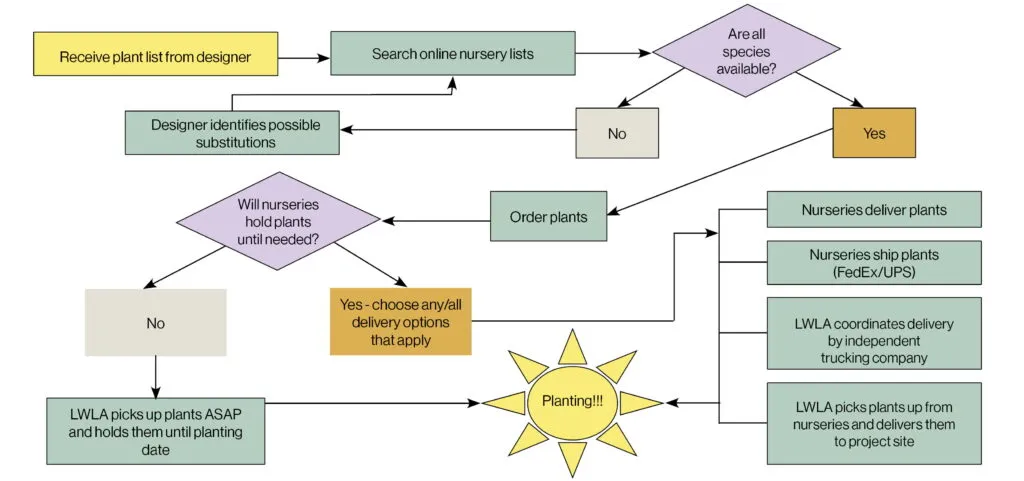
One of my favorite tasks at LWLA is plant procurement, which translates to finding and securing plants, and getting them to the client’s property in time for planting. Because we work almost exclusively with native plant species (which aren’t grown in large numbers by most nurseries) the search for the plants we need can feel almost like a treasure hunt .
There are two main steps—search and send. Let’s walk through what the typical process looks like for LWLA from start to finish.

Plant Search
After an LWLA designer creates a customized plant list for a project, they pass it on to me—typically a few months or weeks before the estimated install date (which sometimes needs to be adjusted based on the site preparation process or weather concerns). Our busiest times for planting are from April until the end of June and then again from September until mid-November.
Our designs typically require a combination of different plant sizes due to factors like nursery industry standards for growing certain species, property size, how fast or slow a species grows, and client preference and/or budget. Most nurseries specialize in specific plant sizes and species, and woodies are typically grown by a completely different set of nurseries than herbaceous plants are, so I may need to engage with dozens of growers to find everything we’re looking for on a given list.
We always prefer to use plants from ecotypes that are local to the project. However, availability of local ecotypes is extremely limited and there are few standards on how this information is presented to buyers. So I always begin by researching what’s available at nurseries located close to the project, and then expand my search as necessary based on what I find. We have more than 300 nurseries on our master list (and find more all the time) so we have lots of options for conducting our search.
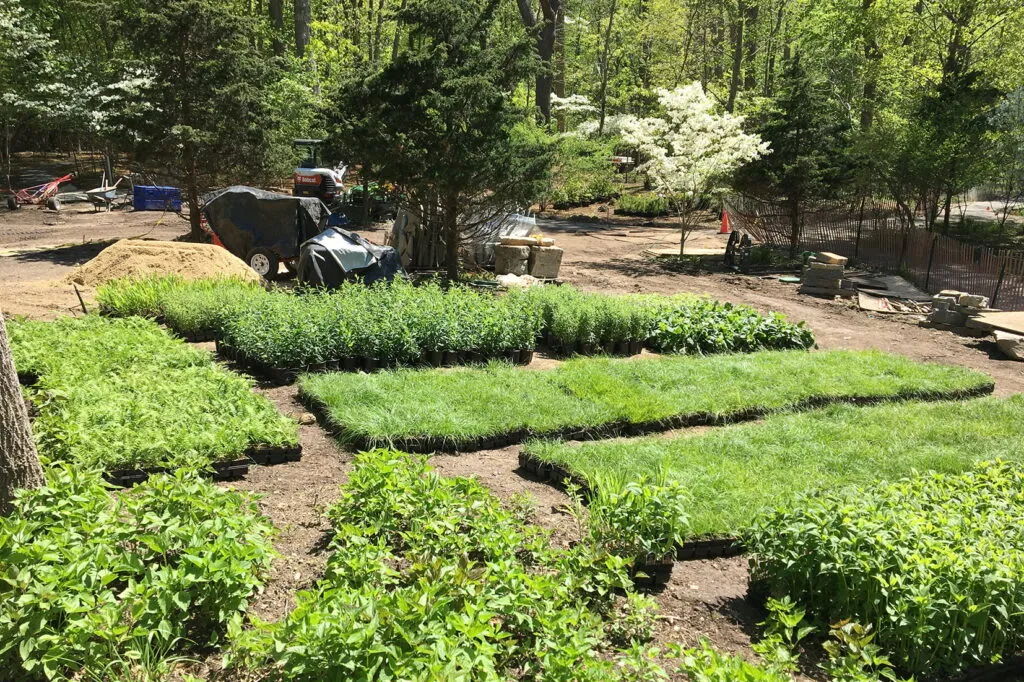
Luckily, many nurseries have lists of their currently available plants on their website (or will send that information to me via weekly email), so that helps tremendously to streamline things. About 60% of my communication with nurseries can be done by emailing our contacts, which is very different than how things worked a decade or more ago. Back then, that information wasn’t readily available on the internet and your best option was to call each one to find out about their inventory and/or fax them a list of what you needed. It was a much slower overall process!
There are still plenty of smaller nurseries that don’t have a dedicated office staff to answer emails and keep current inventory lists that are for the general public. And regardless of size, nurseries are accustomed to having customers call them or visit in person—most nursery folks don’t spend their whole day sitting at a desk!
If I have questions or an order that needs a quick turn-around, I usually find it’s easier to pick up the phone and talk things through with the person on the other end. I also think having regular conversations helps maintain and strengthen our relationships with the vendors who are the foundation of our business. Whether by email or phone, during the busy season I’m in almost daily contact with the nurseries we use most frequently.
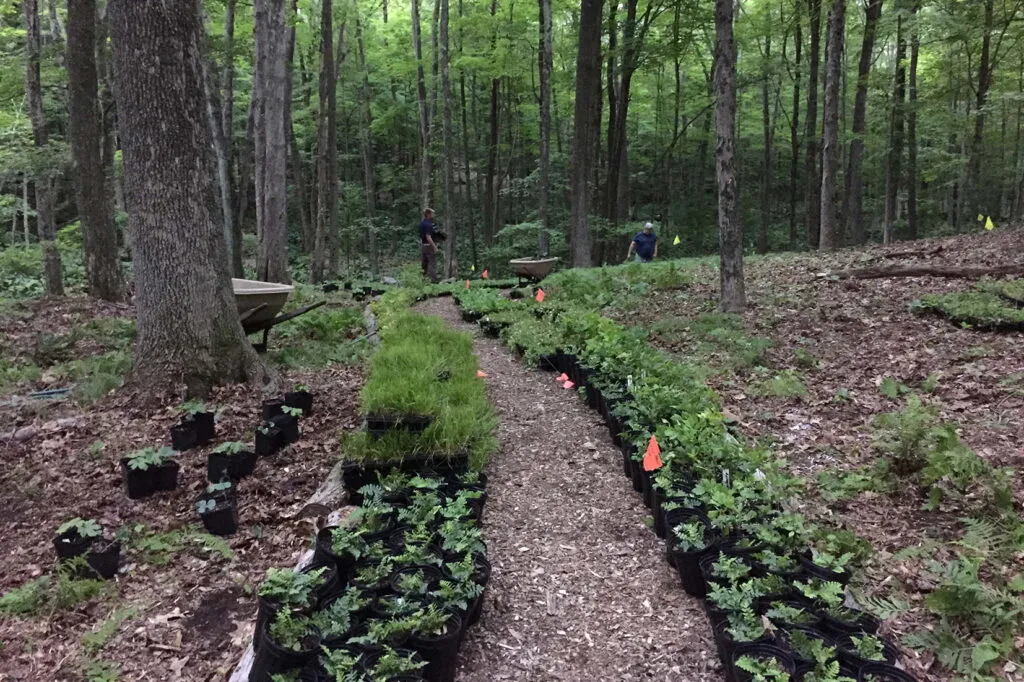
At the beginning of spring, availability lists are quite accurate and there’s plenty of inventory available. At that time of year, it’s a quick process to see who has what, contact sales representatives, and place an order so that they’ll hold the plants for us.
But when planting season is in full swing and plants are practically flying out of the greenhouses, inventory decreases quickly, and the process can involve a bit more legwork. When that happens, I’ll widen my search to nurseries that might be farther away (as long as we can find a way to get the plants) and search the internet for new (or new-to-us) growers that have species we’re looking for. I’m always thrilled when we find new nurseries to work with!
Finally, on almost every list I work with, there will be a few species that I just can’t find. They might be sold out or just not ready at the time of year we want them; in which case we may ask the client if it’s ok to wait until later to install that species. Or we might want something that’s a rare species that very few nurseries grow. In that case, we might see if it’s possible to get a nursery to grow those plants for us (also known as a “contract grow”), which would then be installed later with the client’s approval.
If all else fails, I’ll go back to the designer and request a substitute for a species that is more readily available, and then work on finding that to complete the list.
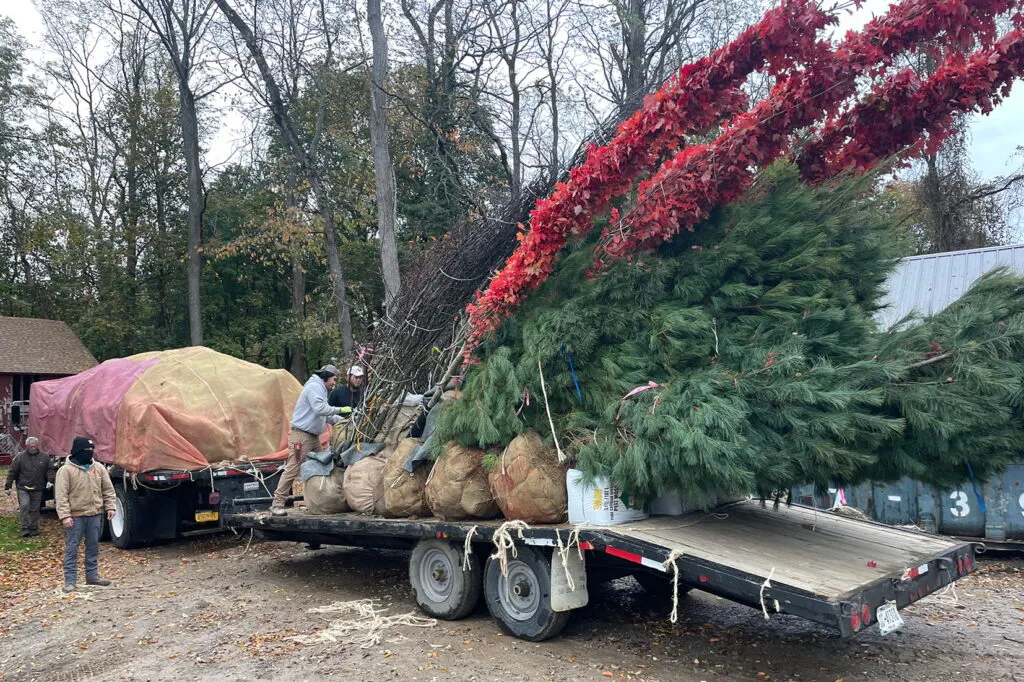
Plant Deployment
After all the plants are found and ordered, I move to the next critical step, which is plotting out when and how all the plants will be delivered to where they’ll eventually live. Typically, that means coordinating with multiple nurseries, each one with different practices and policies for getting their plants to the customer.
Some nurseries are happy to receive orders far in advance of when we’ll be ready for them—usually those are larger operations with plenty of capacity to hold pre-ordered plants for months at a time. Some nurseries are much smaller or just not set up to care for plants indefinitely, so we need to pick the plants up ASAP and care for them ourselves until it’s time to plant. Sometimes I’ll need to place an order with a nursery that only has one species we can’t find anywhere else, but our order is too small to fulfill their delivery minimum. Some nurseries don’t offer shipping or delivery of any kind!
All of those factors at play mean it’s time to get strategic and creative about logistics.
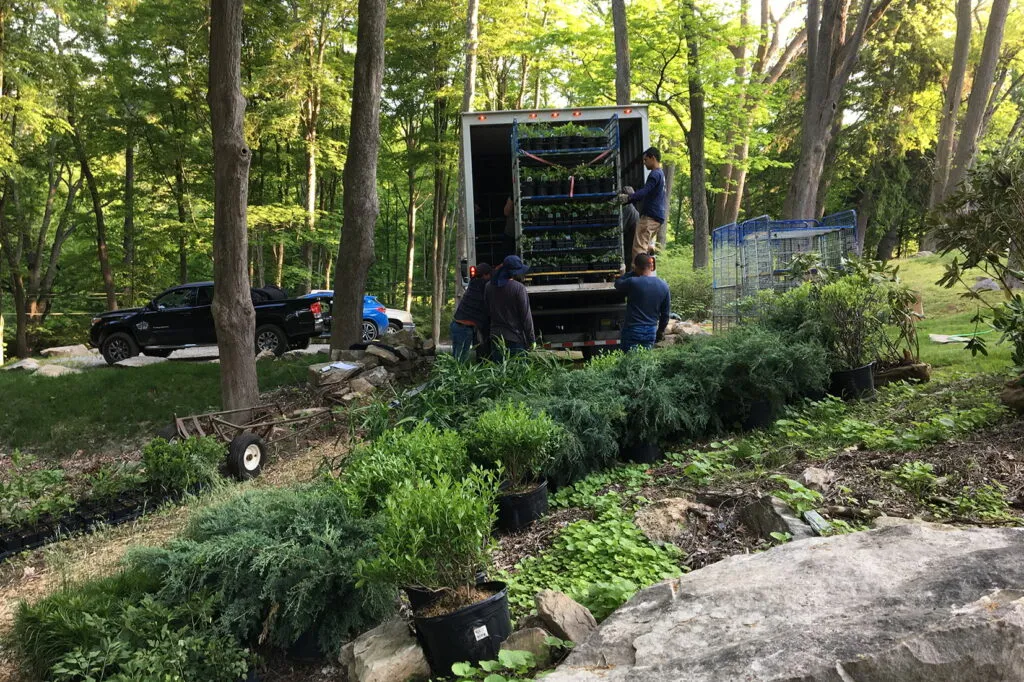
These are the questions I typically ask myself in putting together a delivery plan:
- Will all the nurseries hold our plants until the date we need them?
- If not, can the team member who will be onsite for installation pick up the plants early? If not, who else from the team can do that?
- If, for example, the nursery is in Maryland and the project site is in New York when and how will we get the plants to their eventual home?
- Which (if any) of the nurseries can deliver the plants directly to the client’s site?
- Are they also holding plants for other clients that they could bring at the same time to cut down on deliveries?
- If the nursery can’t deliver the plants and there are too many for our staff to pick up, can we work with an independent trucking company to get them there?
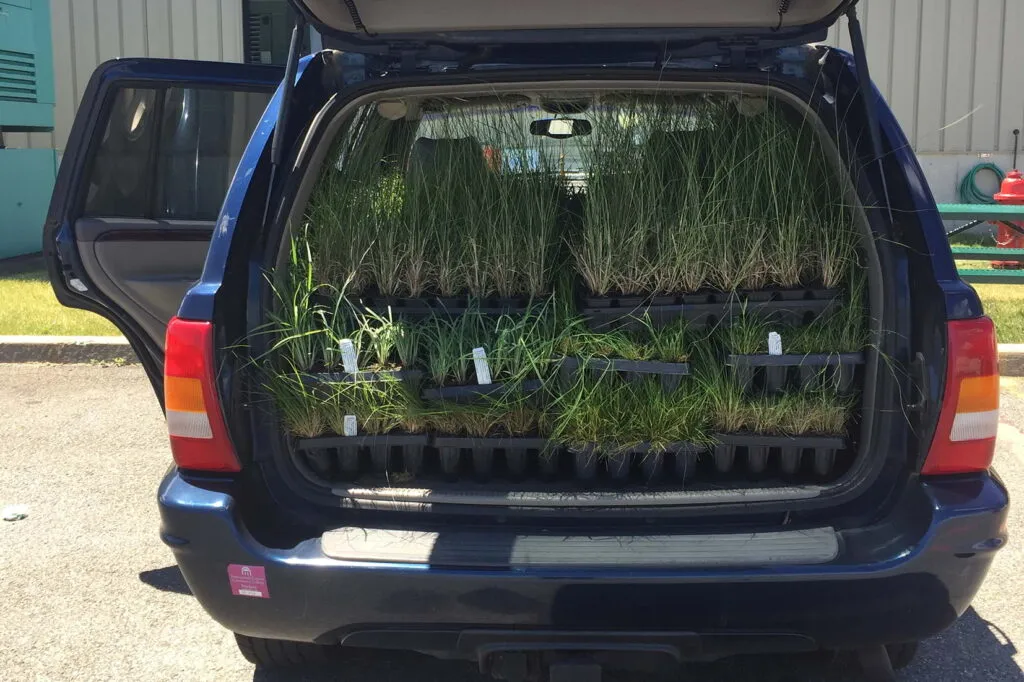
- If some (or all) of the nurseries can’t deliver our order(s), what are our options?Can LWLA staff rent a van or a trailer so that we can pick up the plants ourselves?
- If there are too many plants (or large woodies) for us to handle on our own, what kind of delivery can we set up? The two most common types of drivers we hire are ones with a mid-sized box truck with racks (for herbaceous plants) and/or someone with a tractor trailer (for large woodies)
- If we’re working with a nursery that uses FedEx or UPS, by what date do they need to be shipped to get to the job site on time?Some nurseries only ship plants one day per week. If the plants arrive before the install date, can the client receive them, or do they need to be sent to a secondary location (team member’s house, sub-contractor’s yard) to be cared for until planting day?
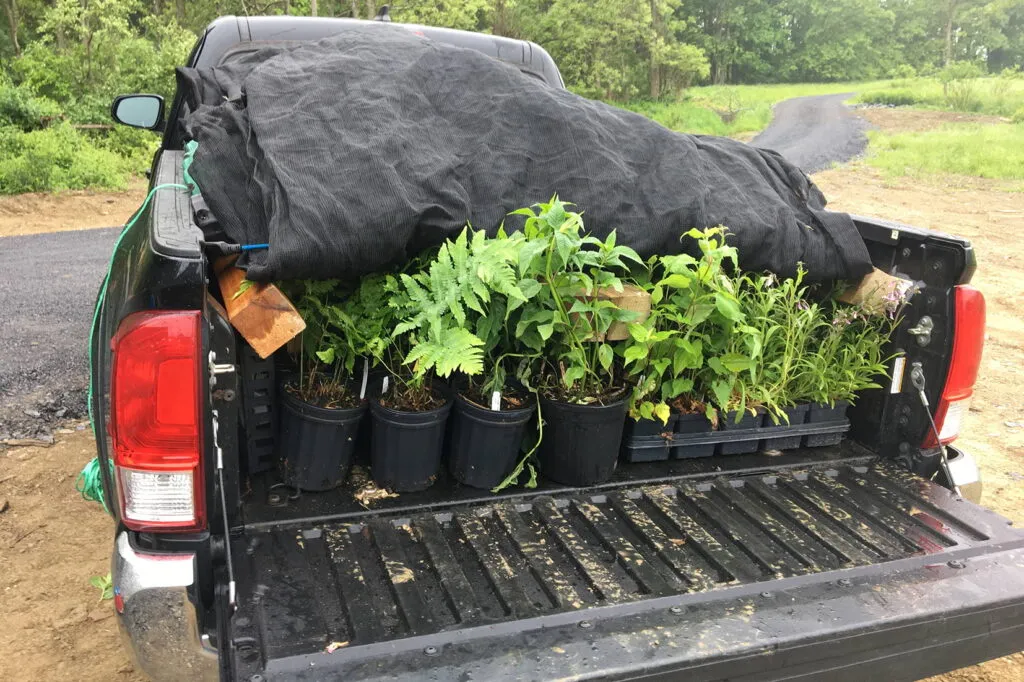
The answers to these questions help me build a framework for a logistical plan. As I’m sure you can imagine, executing the plan involves a lot of coordination between myself and all of the nurseries, independent delivery drivers, and other LWLA team members.
For me, getting hundreds (and sometimes thousands) of plants moved safely and on time from the nursery to their new home is both challenging and fun. From growers to shippers and installation contractors to everyone at LWLA—we are a community whose goal is to return an abundance of native flora to the landscape, one plant at a time. In a way, this community like an ecosystem—one that I’m very proud to be part of.